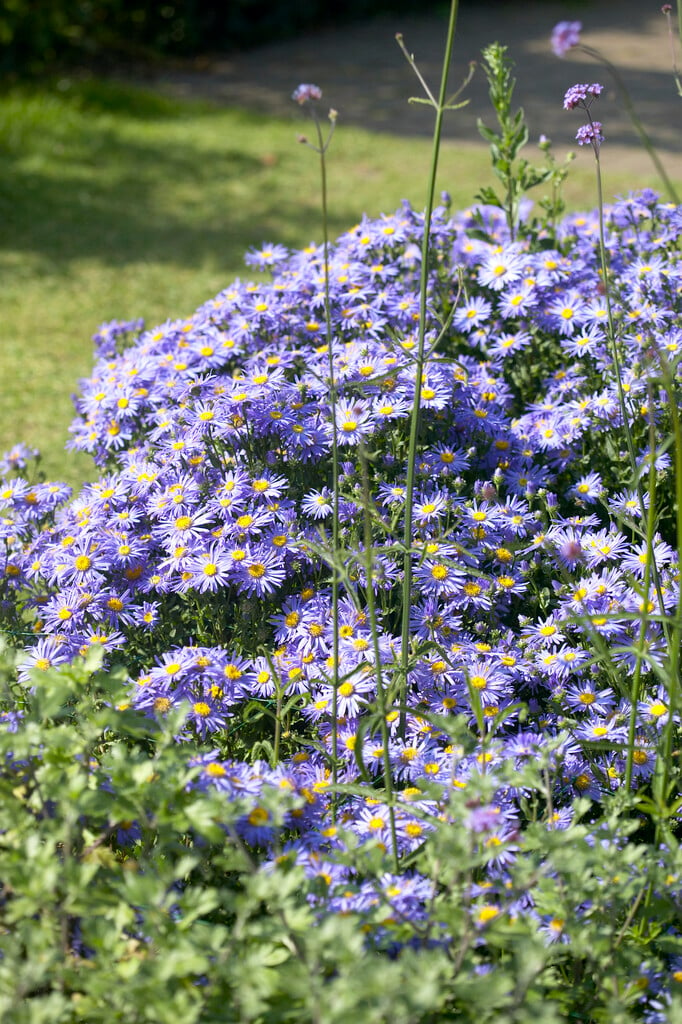Not the plant you're looking for? Search over 300,000 plants
Herbaceous Perennial
Size
Ultimate height
0.5–1 metresTime to ultimate height
2–5 yearsUltimate spread
0.1–0.5 metresGrowing conditions
Chalk
Loam
Sand
Moisture
Well–drainedpH
Alkaline, NeutralColour & scent
| Stem | Flower | Foliage | Fruit | |
| Spring | Green | |||
|---|---|---|---|---|
| Summer | Blue Yellow | Green | ||
| Autumn | Blue Yellow | Green | ||
| Winter |
Position
- Full sun
Aspect
East–facing or South–facing or West–facing
Exposure
Exposed or Sheltered Hardiness
H7Botanical details
- Family
- Asteraceae
- Native to GB / Ireland
- No
- Foliage
- Deciduous
- Habit
- Bushy
- Genus
Aster can be perennials, annuals or subshrubs, mostly with narrow leaves, and solitary or clustered, daisy-like flowers
- Name status
Accepted
How to grow
Cultivation
Grow in moderately fertile, well-drained soil in an open sunny position; thrives in alkaline soil
Propagation
Propagate by division in spring or root basal cuttings in spring
Suggested planting locations and garden types
- Coastal
- Cottage and informal garden
- Wildlife gardens
- Flower borders and beds
Pruning
Cut back after flowering
Pests
May be susceptible to slugs, snails, aphids, leaf and bud eelworms
Diseases
May be susceptible to wilts, leaf spot and grey moulds
Love gardening
Sign up to receive regular gardening tips, inspiration, offers and more
View our Privacy Policy
Get involved
The Royal Horticultural Society is the UK’s leading gardening charity. We aim to enrich everyone’s life through plants, and make the UK a greener and more beautiful place.

